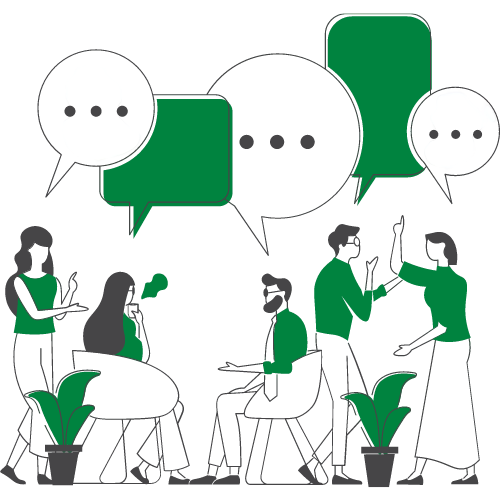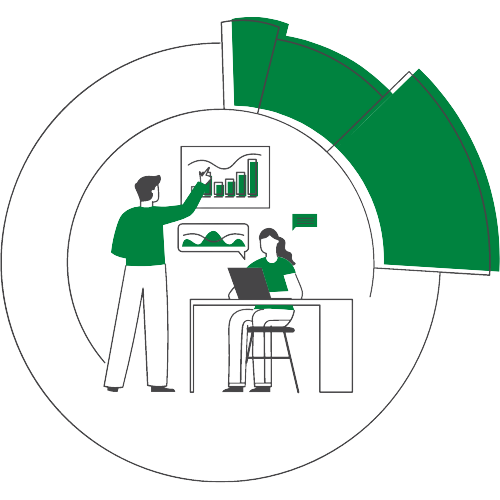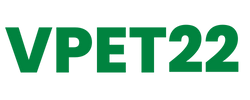Agenda
Join us on September 28 – 29 as our fantastic roster of speakers share case studies, best practices, tools and tactics and more for exceptional online engagement!
AICP CM Credits will be available from the APA.
Exploring What’s Next in Public Engagement
This year’s VPET conference invites you to explore ‘what’s working’ and imagine ‘what’s next’ for public engagement in transportation planning. Over the course of the two-day virtual conference, speakers will dive into four core elements:

Equity and diversity in public engagement are critical topics deserving of discussion. Sessions on this topic will consider elements such as: equity vs equality; reaching underserved or marginalized communities; impacts of online vs in-person engagement opportunities; impacts of the COVID-19 pandemic; barriers to engagement; areas of improvement; what’s next in diversity, inclusivity and accessibility; and more.

A crucial element of successful public engagement is the promotional strategies that garner attention and generate wider engagement from a diverse community. Sessions on this topic will consider elements such as: community and partnership opportunities; social media and online networks; accessing hard-to-reach audiences; developing a culture of engagement in communities; facilitating trust; utilizing demographic data; and more.

As public engagement grows more sophisticated in its use of technology, data becomes more accessible and useful to decision making. Sessions on this topic will consider elements such as: qualitative and quantitative data-gathering methodology; integration of GIS or location-based data; impact of demographic data on outreach and diversity; ‘closing the loop’ on community-generated input; developing reports for stakeholders and decision makers; and more.

What are the tools and tactics that support inclusive, wide-reaching, and informed public engagement? Sessions on this topic will consider elements such as: public engagement tools; technologies to support in-person, hybrid, or virtual engagement opportunities; tactics that support informed input; utilizing software and tools across the organization; creating access for low-bandwidth communities; accessible alternatives; and more.
To download a PDF version of the agenda, click here. All sessions times are in EDT.
Welcome
Dave Biggs, Chief Engagement Officer, MetroQuest
A short welcome address from Dave Biggs, Chief Engagement Officer at MetroQuest! He will kickoff the two-day conference, introduce the first speakers, and share some housekeeping information.
Keynote: Engaging Difficult to Reach Populations and EJ Communities
Dr. Shawn Wilson, Secretary, La DOTD
Abstract:
A future of transportation equity and equality begins with today’s commitments to empower and challenge each other to broaden our base and our conversation in an effort to provide the greatest impact. We all must take up the cause and take meaningful action to support partnerships and embrace the richness of perspectives to broaden the transportation community. This “new normal” of identifying and sustaining pathways to equity should permeate all that we do. While words are valued, actions are transformative and have a lasting impact.
The Building Blocks of Equitable Infrastructure
Moderator:
Brittany Kaim, Senior Manager, Communications and Public Involvement, WSP
Panels:
Gabi Brazzil, Senior Equity Consultant, Equity Center of Excellence, US Advisory Services, WSP
Melissa Uland, Senior Communications Specialist, WSP
Michal Helman, Public Engagement and Equity Coordinator, WSP
Abstract:
Infrastructure has the power to bridge, empower, and improve the lives of underserved communities. As we prepare for the funding coming from the Infrastructure Investment and Jobs Act that will grow and build our communities, public involvement professionals need to expand our engagement to reflect the diversity of voices and the needs of the people we serve. This will help leverage additional funding to empower local communities and improve our planning, design, and ultimate usage and impact of our projects.
This panel will examine projects that center on equity and equitable outcomes to not only involve often overseen communities that are critical to a more inclusive society, but also to provide best practices to revolutionize the way in which we conduct public outreach.
Takeaways
The audience will:
- Examine non-traditional types of equity and inclusion practices.
- Learn about diversity considerations for different underserved communities during project planning, design, and implementation.
- Understand competitive funding opportunities based on best practices in public involvement strategies with a focus on equity and inclusion
BREAK
Removing Roadblocks to Equity and Inclusion: The NC Moves 2050 Story
Nastasha Earle-Young, Statewide Initiatives Engineers, NCDOT
Dominique Boyd, Transportation Engineer III, NCDOT
Abstract:
This presentation will cover the different forms of public engagement that were used during the process of updating the North Carolina Department of Transportation (NCDOT) Statewide Long-Range Multimodal Transportation Plan called NC Moves 2050, which engaged 3 million people across the state of North Carolina!
Speakers from NCDOT will detail the process that was used to send out mass surveys, from an address selection process to working with the Post Office to get a Business Reply permit and inputting responses into MetroQuest, NCDOT’s standard format for the Comprehensive Transportation Plan (CTP) survey. Through a more collaborative, cooperative and comprehensive process, potential public engagement roadblocks were identified and a more strategic approach was taken to engage the public at large.
The session will also discuss the response and results of the survey as well as issues, limitations, and lessons learned. These include the process of creating both paper and online surveys; understanding resource management for the manual data entry of paper surveys; and difficulties translating certain MetroQuest survey elements in a paper survey.
In the end, NCDOT received over ~1,100 responses! We will briefly present the results of the survey and our thoughts on the efficacy and value of this public involvement strategy.
Takeaway:
Participants will leave this session with an understanding of how public engagement can help:
- Increase accountability and transparency of transportation planning and help engineers and planners respond to transportation needs locally, regionally, and statewide;
- Build trust and mutual understanding between stakeholders and the general public;
- Increase engagement at a responsible price and help engineers and planners to build new relationships and/or improve existing relationships with or within communities.
Leveraging Partnerships to Expand Engagement
Carol Henderson, Deputy Executive Director of Intergovernmental & Outreach,
Broward Metropolitan Planning Organization
Marc Friendlich, Marketing Director, South Florida Business & Wealth Magazine
Abstract:
The Broward MPO, in partnership with The MetroLAB at Florida Atlantic University (FAU), and South Florida Business & Wealth Magazine (SFBWM), conducted a series of virtual panels on the MPO’s Vision 2100 Plan in 2021. The goal of these panels was to introduce C-Suite Executives and business leaders from South Florida (Miami, Ft. Lauderdale, and Boca Raton / West Palm Beach) to the Broward MPO and the Vision 2100 Plan. These sessions were hailed as a success by SFBWM, who said they were some of the most successful events they held. In addition to the virtual events, the MPO was able to maximize coverage through television events with a local national channel and a Spanish channel.
In this session, we will cover the Vision 2100 virtual series, and how we used existing relationships to leverage new opportunities for engaging individuals not typically involved in MPO activities. We’ll cover tools and techniques used during the virtual sessions, including interactive questions and polling questions, share the fascinating results of the lively discussion and interactivity, and discuss how Vision 2100 is providing plans for the future and its predicted impacts.
Takeaways:
Participants will leave this session with an understanding of:
- How to use existing relationships to leverage new opportunities for engaging individuals outside of MPO activities;
- Effective tools and techniques for successful virtual events;
- Creating interactive and polling questions
BREAK
Innovative Outreach Methods for Bridging the Digital Divide
Chester Britt, Executive Vice President, Arellano Associates
Edgar Gutierrez, Senior Project Manager, Arellano Associates
Abstract:
The digital divide was expedited exponentially during the COVID pandemic due to the growing reliance on virtual platforms and limited in-person engagements. Although technology has enhanced access to information and public participation opportunities, it has had the opposite effect when it comes to reaching underrepresented communities with limited access to the internet and electronic devices. Addressing this issue is pivotal for ensuring that all impacted stakeholders continue to have a voice in the planning process to align community’s interests with the project goals.
This session will detail the hybrid outreach solutions and CBO partnerships that Arellano Associates (AA) has employed for enhancing access to participation opportunities for underrepresented communities during periods with limited in-person engagements and as part of the overall increasing shift to virtual engagements. The proliferation of online communication solutions offers an opportunity to bridge the digital divide by bringing online tools to communities with limited access to internet. Virtual outreach campaigns must consider options for replicating access to online resources via in-person approaches.
Besides promoting equitable outreach, this approach will contribute towards boosting digital literacy within underrepresented communities and help tear down the virtual walls that are limiting participation.
Takeaway:
Participants will leave this session with an understanding of:
- Creating virtual outreach campaigns that replicate access to online sources via in-person approaches, and vice versa;
- Employing hybrid approaches that offer a variety of access and participation options based on accommodations needed by the target audiences;
- Developing virtual literacy particularly in underrepresented communities, to help tear down virtual walls limiting participation.
BREAK
Strategies for Engaging with Harder-to-Reach Communities
Mary McIlvain, Communications Director, Morreale Strategic Communications
Berenice Alvarez, Vice President, Morreale Strategic Communications
Abstract:
CCDOTH and Morreale’s successfully launched the pilot Fair Transit South Cook Program, where we used various print, digital and social media campaigns to access hard-to-reach audiences by utilizing demographic data. Cook County Department of Transportation and Highways brought us on to bring awareness to the pilot Fair Transit South Cook program which increased service on Pace and lowers costs for Metra riders in South Cook County who experience longer commutes times than north side residents and who spend half of their income on transportation expenses. We launched an advertising campaign on August 30, 2021 and ran through October 15th to help reach underserved communities that needed affordable, accessible and equitable transit. Through Fair Transit, we have started to amend inequities in transportation access by leveling the playing field for traditionally underserved communities.
Public awareness, participation and support from community partners were critical to the effectiveness of the pilot. Numerous in-person and virtual community engagement activities took place in Year 1 to showcase the benefits of Fair Transit South Cook. Data is actively being collected during the pilot to ensure the program has reached those who could potentially use Metra and Pace transit services and to determine if marketing efforts have reached the intended audience.
Takeaways:
Participants will leave this session with an understanding of:
- Digital and print strategies behind reaching underserved communities
- Utilizing demographic data to create inclusive campaign messaging and surveying
- Developing and implementing meaningful advertising that results in successful engagement
Shifting the Paradigm on Public Engagement: Hybrid Models for a Post-Pandemic World
Ann Cundy, Statewide Initiatives Engineers, Director of Transportation, Central Shenandoah Planning District Commission
Ashley Dobson, Director of Operations and Strategic Communications, Avid Core
Abstract:
The COVID-19 pandemic forced many of us to grapple with a reality that had been bubbling under the surface for decades: most public engagement processes aren’t effective, representative or inclusive. This presentation draws on the lessons learned through public engagement processes for the Harrisonburg Rockingham Metropolitan Planning Organization’s (HRMPO) long range transportation plan and provides an overview of how to design a hybrid public engagement process that meets the needs of your community and your organization’s size and resources, as well as how to measure and evaluate engagement to refine your existing practices. Participants can expect to leave this session with the understanding, tools, and resources they need to build trust through effective and comprehensive public engagement.
Takeaways:
Session participants will leave this session with:
- The ability to scale a public outreach process to match their size and resources;
- Knowledge of the tools and tactics that can be employed to reach your target audience, particularly harder to reach populations such as Tribal Nations and communities of color;
- An understanding of how to build trust through effective and comprehensive public engagement
Closing Address: Strategies for Successful Equitable Surveys
Norma Hogan, Director of Client Services, MetroQuest
Gerard Penalosa, Customer Success Manager, MetroQuest
Emily Margitan, Customer Success Manager, MetroQuest
Abstract:
Public engagement for transportation and urban planning face many barriers to equity, as the sessions at VPET22 demonstrate; technology, hybrid solutions and best practices give practitioners the tools to reach wider audiences, particularly in environmental justice communities. In this session, we will share five key aspects to consider for your next online public engagement survey to ensure that you gather input from broad audiences. Join us as we look at MetroQuest survey examples from agencies and firms that succeeded in engaging equitably.
By utilizing tools like MetroQuest, planners can achieve greater equity in their public engagement efforts by ensuring that the necessary information is gathered, allowing stakeholders and planning teams to understand who they are hearing from, and providing the tools to find and close any gaps in the demographic range, thus reaching a more-representative sampling of the community
Welcome: Equity and Equality using MetroQuest
Mike Walsh, Chief Executive Officer, MetroQuest
Charlotte Bergman, Senior Developer, MetroQuest
Clarice Yuen, Team Lead Developer, MetroQuest
Abstract:
A short welcome address from MetroQuest CEO, Mike Walsh, to kick off day 2 of VPET22! He will be joined by Charlotte Bergman and Clarice Yuen, who will present a brief overview of how MetroQuest surveys serve up equitable solutions through existing features, touch on software features currently in development, and plans for the future.
They will touch on the popular translations feature that supports engagement professionals and practitioners in reaching non-English language parts of the community, including some major improvements to support more diverse audiences. With tons of discussion around accessibility and diverse engagement in public engagement, they will also share MetroQuest’s plans for improving accessibility and current accessibility features in the online Surveys.
Keynote: The Myths About Virtual Public Engagement
Theresa McClure, Transportation Strategic Communications Director, HDR
Abstract:
From the inception of social media and smart phone technology, public involvement practitioners have been encouraging the use of virtual engagement to bring forward the voices of the people that typically don’t engage traditional public meetings. And it worked. Over time we have shown a strong business case that proves more people from minority and disadvantage populations engage when it is easy, accessible, and at their fingertips.
Fast forward to 2020. Public involvement practitioners where prepared more than any other discipline in the transportation industry to deliver our work online. But through the pandemic, we learned a lot about how our approach to virtual public involvement needs to change to a digital first strategy keeping equity at the forefront of our approach.
At this year’s VPET conference Theresa will show how using data and lessons learned through the pandemic can help practitioners leap over the digital divide to implement digital-first community engagement that puts people first in transportation planning and infrastructure development.
Establishing Accountability in Today’s Hybrid Public Engagement
Nora Madonick, CEO and Founder, Arch Street Communications
Vinson Sanders, Deputy Director of Digital, Arch Street Communications
Abstract:
The COVID-19 pandemic has permanently shifted expectations for public engagement in transportation. According to Pew Research Center, just 20% of Americans trust the federal government to “do the right thing” as the U.S. heads into post-pandemic infrastructure projects. The shift to virtual communication during the pandemic has solidified virtual as an accepted mechanism for engagement; now agencies are faced with transitioning to hybrid engagement that combines both virtual and in-person. How can we do this effectively, ensure people feel safe and considered, meet compliance requirements for accessibility and inclusiveness, entice people to participate—and stay within budget?
In this presentation, Arch Street Communications CEO and Founder Nora Madonick and Deputy Director of Digital Vinson Sanders will share how integrated use of digital tools can increase accessibility, restore and build public trust, and ensure public engagement effectiveness does not diminish during the shift to hybrid. In this interactive presentation, Nora and Vinson will guide conference attendees through building a complementary hybrid strategy and choosing the right tools. We’ll review how to understand audience needs, collecting meaningful feedback in a hybrid structure, and how to leverage social platforms to expand reach.
Takeaways:
Participants will leave this session with an understanding of how:
- Today’s digital tools can help boost transparency—if you establish a careful plan for their use from the start;
- Thorough research and information gathering on your audience is essential for ensuring smooth campaigns and successful gathering of feedback;
- The shift to hybrid events and multichannel communications can greatly strengthen public engagement and reach more groups than ever before.
Data-Driven Community Engagement: The Power Behind using the Right Tools
Sue Christiansen, Supervisor of Media & Public Engagement, Regional Transportation Commission of Southern Nevada (RTC)
Daniel Fazekas, Manager Transportation Planning, Regional Transportation Commission of Southern Nevada (RTC)
Abstract:
The Regional Transportation Commission (RTC) of Southern Nevada launched the On Board Mobility Plan Survey 4, beginning in November 2021 and ending in January 2022. A forward-thinking concept created in partnership with the community, On Board is designed to strengthen and diversify the region’s transportation network, while providing more options to meet the needs of the broader population.
Through Survey 4, the agency returned to the community to ask whether the On Board plan still accurately captured transit and non-transit riders’ vision of an ideal future regional transportation network, their priorities and preferred investments, or if the community’s priorities had shifted during the pandemic. Over several months, the survey teams attended hundreds of events designed to attract specific segments of the population, such as seniors, veterans, Asian Americans and Pacific Islanders, Latinos, African Americans, and the underserved.
The survey garnered more than 15,000 responses and landed the RTC’s On Board survey among MetroQuest’s Top 10 performers of all time in terms of total surveys returned, and, most notably, No. 1 in its platform history as it relates to engaging the Spanish-speaking community.
The RTC session will focus on the strategies that were developed using MetroQuest, plus share some key insights into preparing the right questions to get the right data from the right audiences using the right tools.
Takeaways:
Participants will leave this session with an understanding of:
- The importance of having an organized survey deployment, from creating advertising and media opportunities to web-based strategies and data analysis, and more;
- Remembering equity and making sure your survey teams represent (i.e., look like) the community they are surveying;
- The importance of weekly check-in meetings to identify gaps and plug in additional resources/capacity where community feedback has been lagging.
BREAK
Utilizing Vision Zero Principles to Engage Diverse Communities: Charlotte’s Safer Streets Survey Case Study
Christine Edwards, Founder and Principal Consultant, Civility Localized (formerly Amplify Consulting)
Khrystle Bullock, Community Engagement Project Manager, Civility Localized
Scierra Bratton, Vision Zero Community Coordinator, Charlotte Department of Transportation
Abstracts:
Communities of color are disproportionately impacted by Charlotte’s High Injury Network. In this session, expert speakers from Civility Localized, a Charlotte-based consulting firm focused on equitable and diverse engagement, will demonstrate how to use equity-based objectives to inform, educate and engage communities of color, and obtain quantitative information and lived experiences related to safe travel habits and needs in your local community.
Learn how we identified key stakeholders and created outreach opportunities that would reduce barriers for participation for our local Department of Transportation to make data-driven decisions for future Vision Zero Planning. Our goal is to increase Vision Zero engagement and collaboration among community members who represent diverse cultures, languages, ages, socioeconomic and abilities in Charlotte. We worked to identify the top behaviors and systems resulting in disproportionate serious injuries and fatalities in Charlotte’s High Injury Network to foster a safety-first culture in the daily travel experiences for all Charlotteans and plan for safer street systems through infrastructure investments in key areas.
Takeaways:
Participants will leave this session with an understanding of:
- Communicating tough conversations about transportation safety and equity;
- Data-driven decision making about safe travel in large urban cities;
- Reducing traffic fatalities in communities of color
Digital Engagement Tools for the Whole Participation Spectrum
Susanna Haas Lyons, Civic Engagement Specialist, Susanna Haas Lyons Consulting
Abstract:
How can you best leverage the potential of digital tools to deepen meaningful public involvement? This session will map out a wide range of digital engagement tools and identify the unique roles and strengths of each and discuss best practices for tool selection.
The International Association for Public Participation has developed a spectrum to help classify the level of participation that defines the public’s role in public participation processes.
This session will outline a wide range of digital engagement tools and pair each one to the 5 levels defined by the spectrum: inform, involve, consult, collaborate or empower. We will also identify their unique roles and strengths and discuss the best practices for tool selection, paying special attention to equity and inclusion as it relates to each tool category.
This session will engage participants to assess key lessons learned in the application of digital engagement tools. Together we will reflect on key considerations for high quality digital engagement and share a set of ten key questions to ask when selecting tools. Session participants will also be introduced to take away resources.
Takeaways:
Participants will leave this session with:
- Typology of digital engagement tools with examples in each category;
- Tips for applying an equity and inclusion lens in digital engagement;
- Ten questions to ask about a potential digital engagement tool.
BREAK
Bridging the Gap: An Equitable Approach to Hybrid Engagement
Ryan Adamson, Engagement Specialist, WSP
Abstract:
The COVID-19 Pandemic has changed our daily lives and the way people interact with one another. Community engagement has had to adapt quickly to health and safety concerns in order to ensure the preservation of public interest during the sustained pace of land use policy development, policy conformity exercises and other routine municipal and state processes. The outcomes of the pivot to virtual engagement programs are still being understood by the industry through a weighing of what has worked and what has not. During this period, one phrase has captured our industry’s imagination: hybrid engagement.
This session will highlight elements of WSP’s forthcoming White Paper on the topic of hybrid engagement and will provide an overview of how WSP interprets hybrid engagement. We will discuss the methods we use to responsibly maximize engagement budgets to increase community participation, reduce barriers to participation and apply lessons learned from the pandemic. Responsible engagement responds to renewed calls to dismantle systemic inequality brought to the forefront by movements like Black Lives Matter, Stop AAPI Hate and Every Child Matters (Canada). Our approach seeks to increase equity, diversity, and inclusion in engagement by applying lessons learned through the pandemic to challenge long-standing industry barriers that have stifled representative engagement.
We will utilize interactive polling throughout the session to capture feedback and ideas from participants who have conducted their own hybrid engagement. Results will be shared in follow up to the session.
Takeaways:
Participants will leave this session with an understanding of:
- How hybrid engagement can be implemented as an integrated model where digital and in-person tools are effective, efficient, and complement each other;
- The current gaps and challenges limiting equity, diversity, and inclusion in the engagement process and how hybrid engagement can solve these problems;
- Specific methods and tactics of hybrid engagement that can be implemented to support public interest.
Virtual Public Engagement at Texas MPOs: Into the Future
Moderators
Chris Simek, Associate Research Scientist, Texas A&M Transportation Institute
Tina Geiselbrecht, Senior Research Scientist, Texas A&M Transportation Institute
Panels
Robert MacDonald, Transportation Planning Director, Corpus Christ, TX MPO
Bryan McBride, Transportation Planning Manager, MPO Director, Longview, TX
Sonia Jiménez, Deputy Director, Alamo Area MPO
Brigida Gonzalez, TxDOT Transportation Planner/MPO Coordinator, TxDOT
Abstract:
The Texas A&M Transportation Institute (TTI) is currently conducting research to assess how Metropolitan Planning Organizations (MPOs) in Texas adapted required public engagement activities during the pandemic.
In this panel session, representatives from MPOs will discuss their approaches in more detail, providing the audience with uses cases that highlight successful practices and lessons learned. Of particular interest is understanding how those adaptations met the needs of diverse audiences. The research also documents how bylaws, programs and policies were changed to adapt to a new virtual environment.
With over 23 MPOs in Texas that vary greatly in terms of geographic size, staff and responsibilities, this panel session seeks to understand how virtual public involvement (VPI) tools and techniques were used as part of the metropolitan planning process during the COVID-19 pandemic restrictions; how Title VI and Environmental Justice (EJ) concerns were addressed; lessons learned and best practices; and plans for future VPI activities or hybrid engagement.
Takeaways:
Participants will leave this session with:
- an understanding of how to address VPI from a regulatory perspective, in terms of what is allowable and best practice;
- concrete examples of how to use VPI for long-range planning from case studies;
- lessons learned and best practices from a variety of tools and techniques from the MPO panelists.
BREAK
From Engaging to People-Centered Inclusion
Eric Kopinski, I-270 North Project, Deputy Director, Missouri DOT
Nina M. Thompson, I-270 North Project, Communications Coordinator, Missouri DOT
Abstract:
I-270 in North St. Louis is one of the heaviest traveled interstates in Missouri. With approximately 140,000 vehicles travelling daily, it offers limited pedestrian facilities, an aging infrastructure, and various challenges related to overall safety and reliability of the entire transportation network. The I-270 North Project aims to improve mobility and overcome obstacles faced by local users and interstate travelers. It was essential for the project team to heavily engage people in the community, strengthening their credibility and presence, and prioritizing inclusion to uplift members’ voices regarding the project.
The Missouri Department of Transportation facilitated ongoing opportunities for the public to share project information to gain support of members in the community. This session will give an overview of how to implement award-winning, creative, and innovative strategies that improved traffic management, addressed COVID-19 limitations, and helped build long-term community ownership and buy-in of the work. We will highlight the best practices for effective public engagement, how to remain consistently active in the community through media and other avenues, and detail ways to build a community’s trust.
Takeaways:
Participants will leave this session with an understanding of:
- Gaining effective public engagement that goes beyond information distribution to true involvement in the project;
- Modelling strategies based on your audience and give members a public voice;
- and building trust and credibility in your community
Closing Keynote: Peer-to-Peer: The Planner’s Guide to Equity in Public Engagement
Dave Biggs, Chief Engagement Officer, MetroQuest
Abstract:
The pressure to meaningfully address equity in transportation decision making and investment has been mounting for years. This keynote will unbundle the current climate, the federal programs and initiatives supporting equity and the results of a nationwide peer-to-peer process to uncover best practices for public involvement to support equitable outcomes. A great deal of change is occurring in how equity is being addressed and the results of this research process will give agencies the wisdom of peers across the country.
